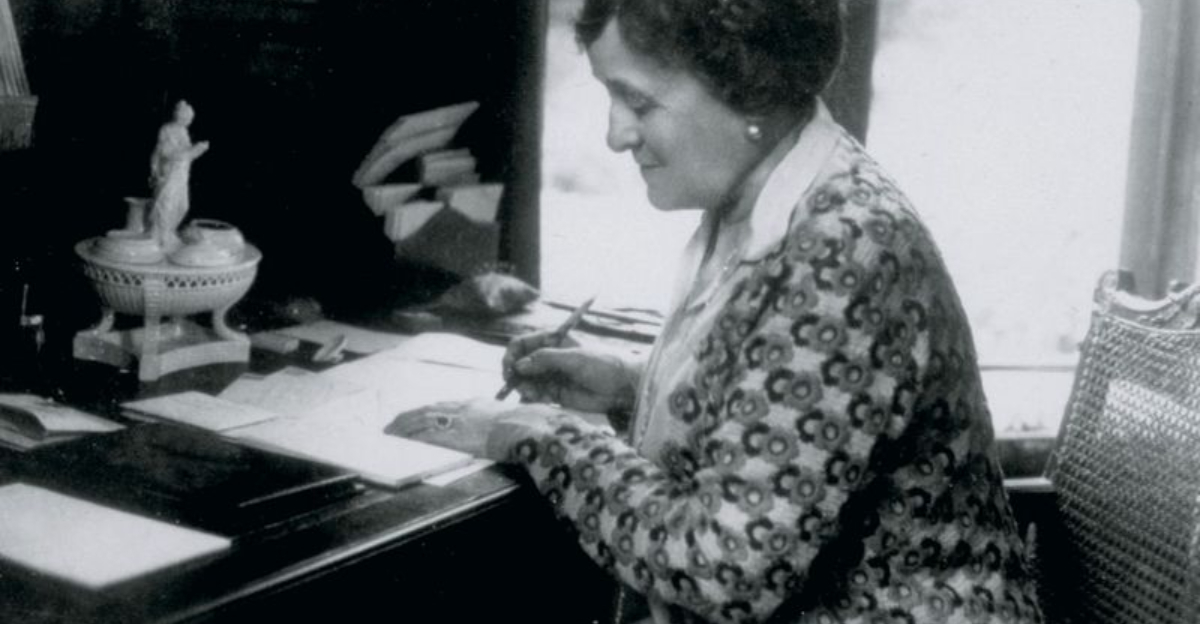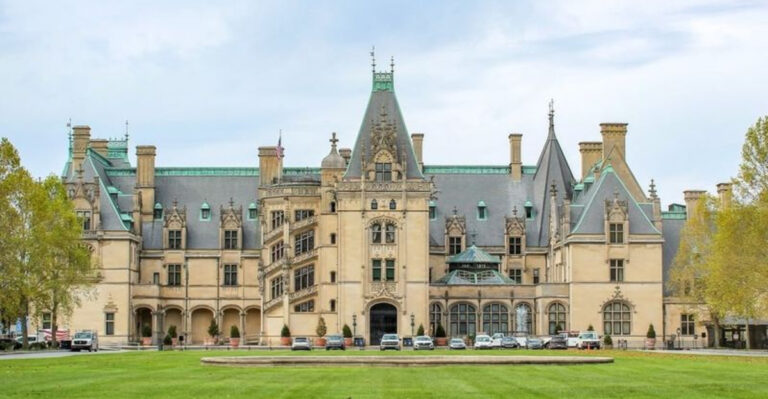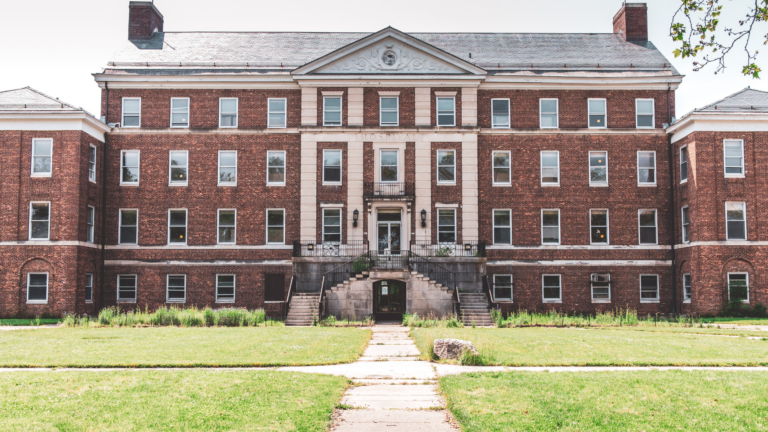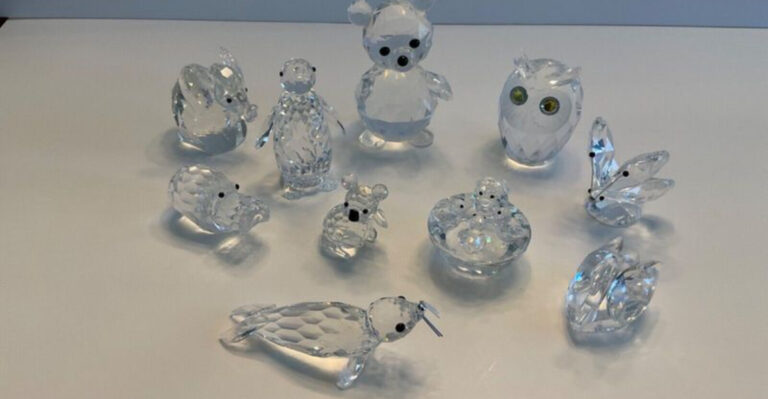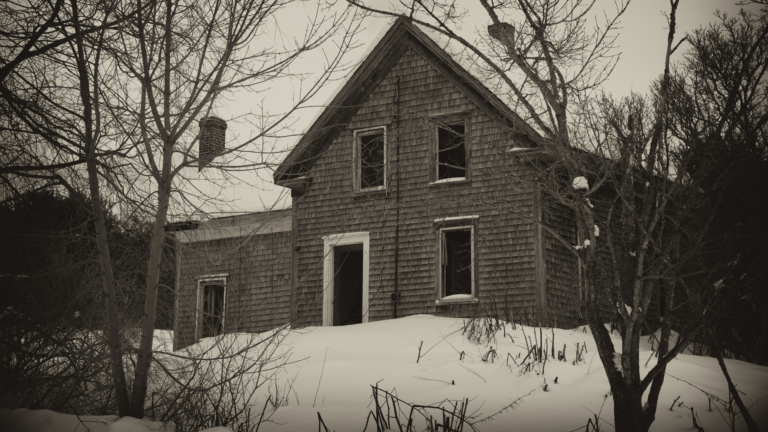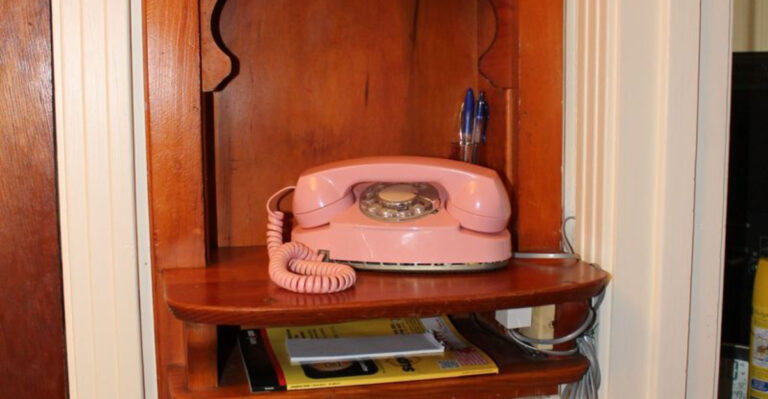15 Vintage Photos From Inside America’s Grandest Houses
Ever wonder what life looked like inside the most luxurious homes in America decades ago? These vintage photos offer a rare peek behind the velvet curtains of the country’s grandest estates.
From ornate ballrooms to lavish libraries, each snapshot captures a moment in time when opulence ruled and craftsmanship was king.
Whether you’re a history buff or just love beautiful design, get ready to be transported through 15 stunning glimpses of America’s golden-age grandeur.
1. The Breakers’ Great Hall
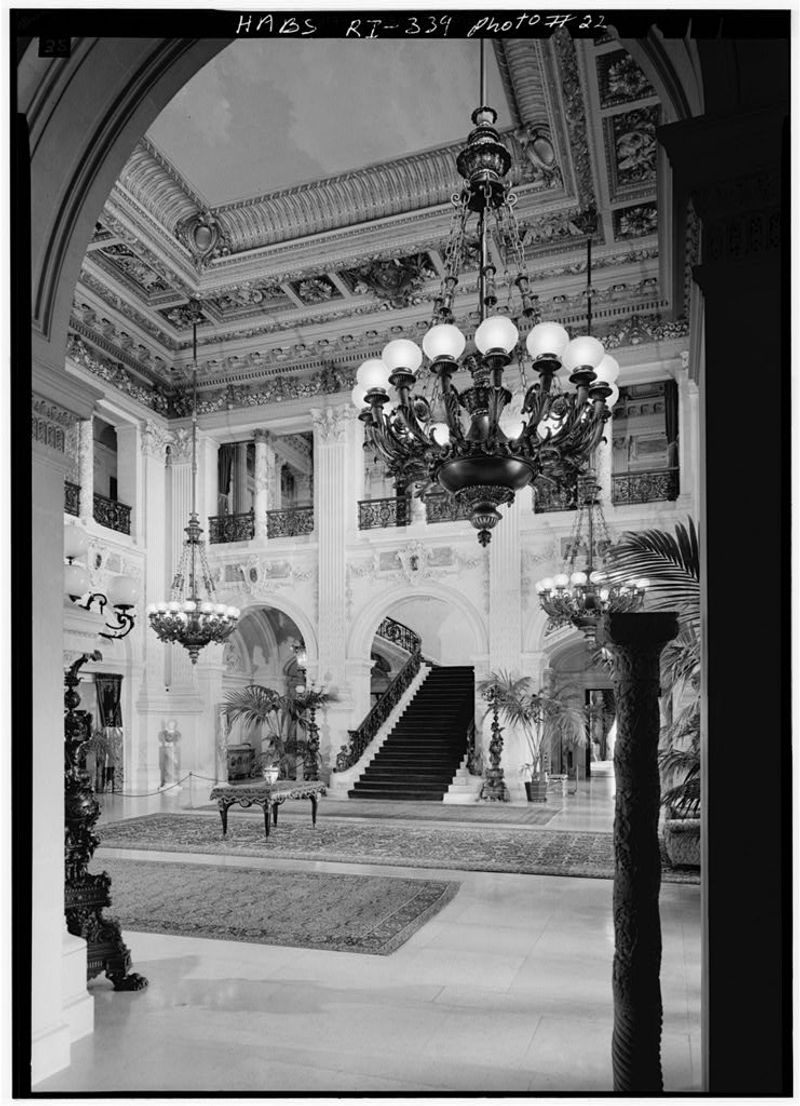
If walls could talk, the Great Hall of Newport’s Breakers mansion would tell tales of Vanderbilt parties that made the Great Gatsby look modest!
Photographed in 1895, this stunning room showcases 50-foot ceilings adorned with intricate Renaissance-inspired moldings. Massive chandeliers hang like crystallized clouds above the marble floor, while imported Italian columns frame the space.
The photographer captured servants arranging flowers before a gala, giving this image a rare lived-in quality among formal architectural photos of the era.
2. Marble House
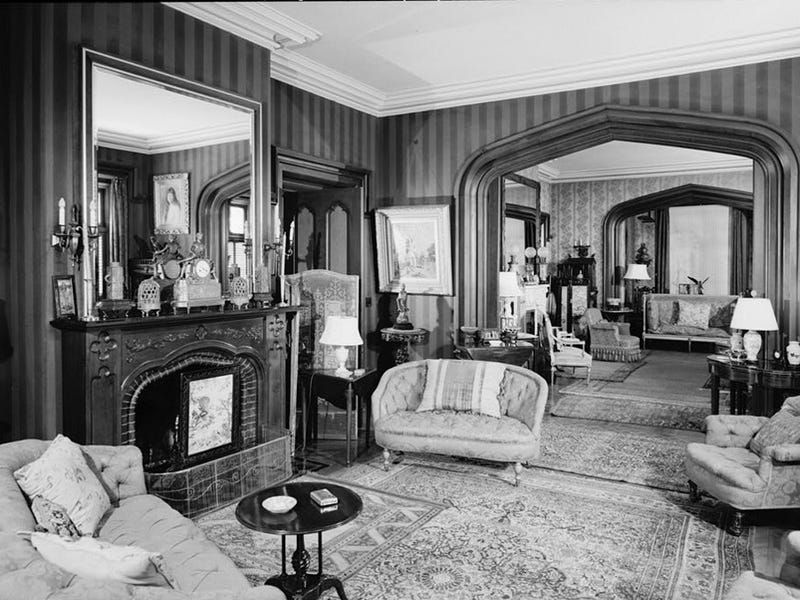
Sometimes excess becomes art! This 1892 photograph of Marble House’s Gold Ballroom captures what happens when you give an architect unlimited funds and a mandate to outshine European royalty.
The walls literally drip with 22-karat gold leaf, creating a sunlit glow even on cloudy Newport days. Alva Vanderbilt stands proudly center-frame in this rare image, her elaborate dress competing with the room’s opulence.
The photographer brilliantly captured light streaming through French doors, illuminating gilt surfaces that cost over $7 million in today’s dollars.
3. Biltmore’s Banquet Hall
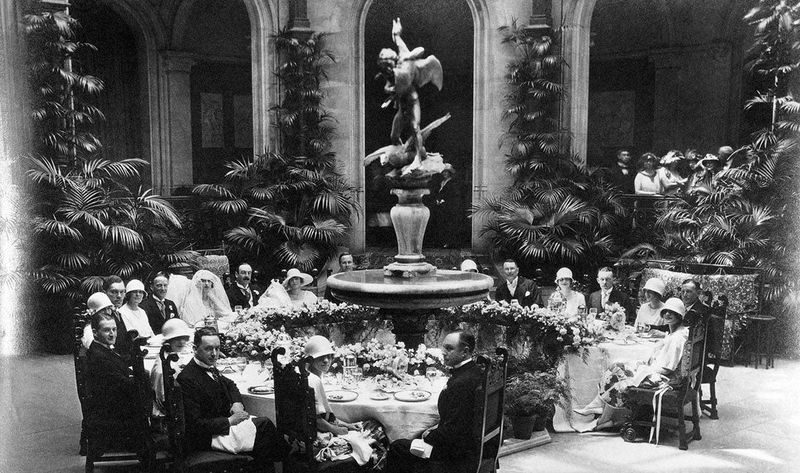
Forget your dining room table! This rare 1904 holiday photo shows the Biltmore Estate’s 70-foot-long banquet hall decked out for Christmas dinner.
George Vanderbilt’s triple-height dining space could seat 64 guests beneath its hand-carved oak ceiling. Look closely at the enormous fir tree touching the ceiling – staff needed ladders to decorate its highest branches!
Flemish tapestries line walls warmed by three massive fireplaces, while the table settings feature gold-rimmed Limoges china specially commissioned for the estate.
4. J.P. Morgan’s Private Sanctuary
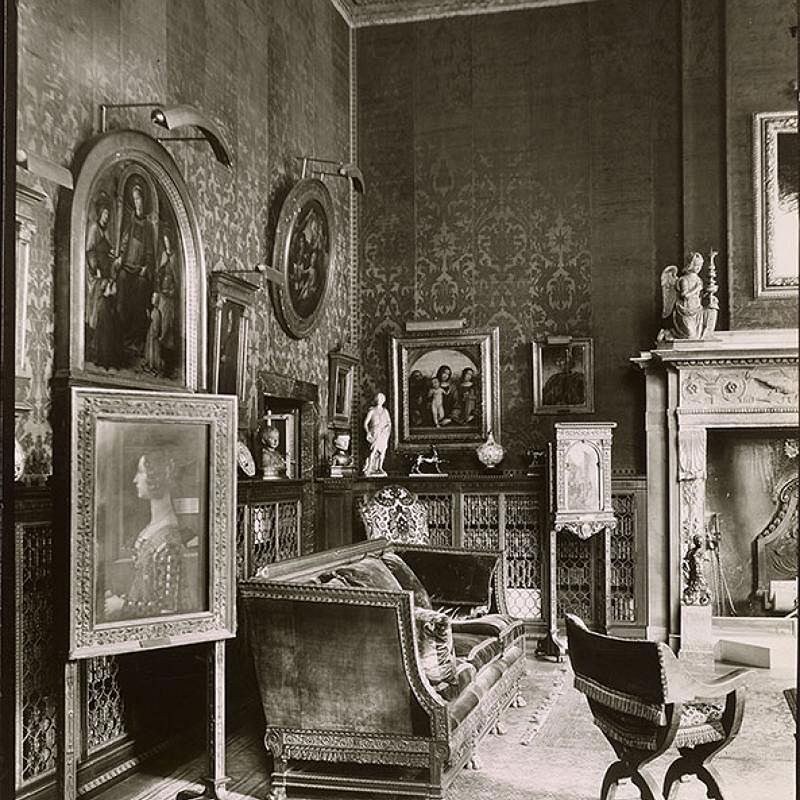
Where did America’s most powerful banker escape to think? This 1891 photograph reveals J.P. Morgan’s private library at the Metropolitan Club, a space few were privileged to enter.
Leather-bound first editions line custom mahogany shelves, while Morgan’s infamous temper seems almost visible in the dramatic shadows. His personal chair – wider than normal to accommodate his large frame – sits empty but imposing near a desk covered with financial documents.
The photographer captured the library just after Morgan had left, with a cigar still smoldering in an ashtray.
5. Hearst’s Paradise
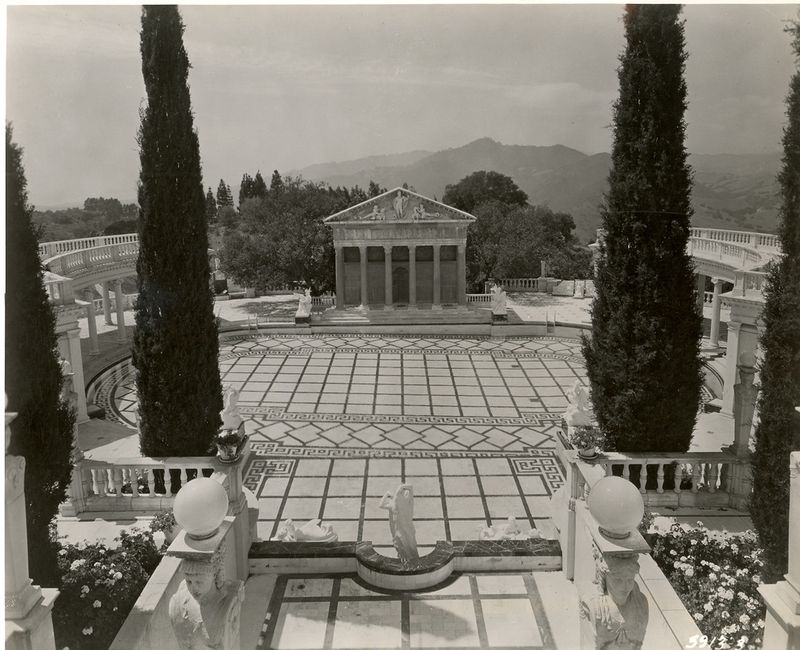
The newspaper magnate spared no expense, importing over one million Murano glass tiles to create this indoor swimming paradise.
Hollywood stars like Cary Grant and Greta Garbo often lounged on those marble benches between dips. The photographer captured morning light streaming through alabaster windows, creating an almost otherworldly glow across the water’s surface.
Eight marble statues of Roman gods watch over swimmers – replicas Hearst commissioned directly from the Vatican’s collection.
6. Rosecliff’s Heart-Shaped Staircase
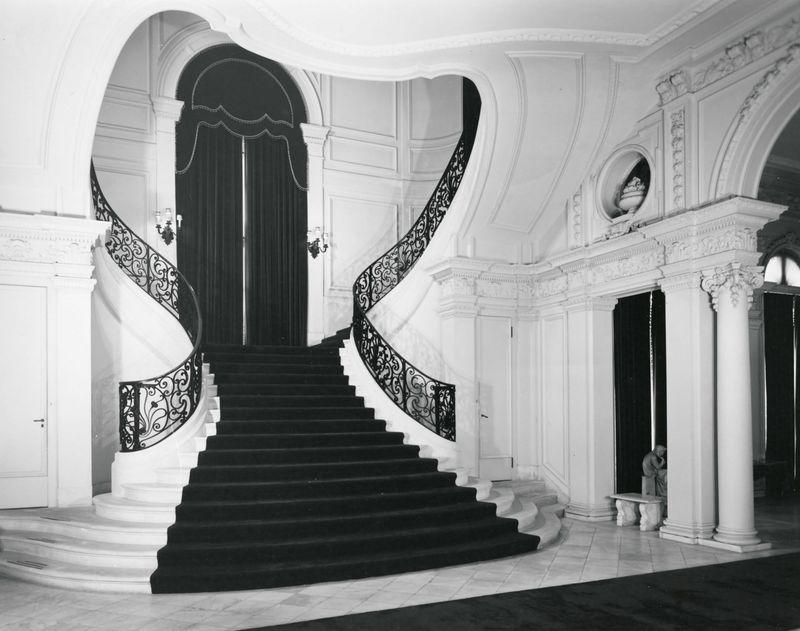
This 1902 photograph captures Newport’s most romantic architectural feature – a heart-shaped double staircase where debutantes made unforgettable entrances.
The Tessie Oelrichs, the mansion’s society hostess, commissioned Stanford White to create this showstopper specifically for her legendary parties.
White marble steps curve gracefully toward each other before joining at a landing overlooking the ballroom.
7. Fallingwater’s Living Room
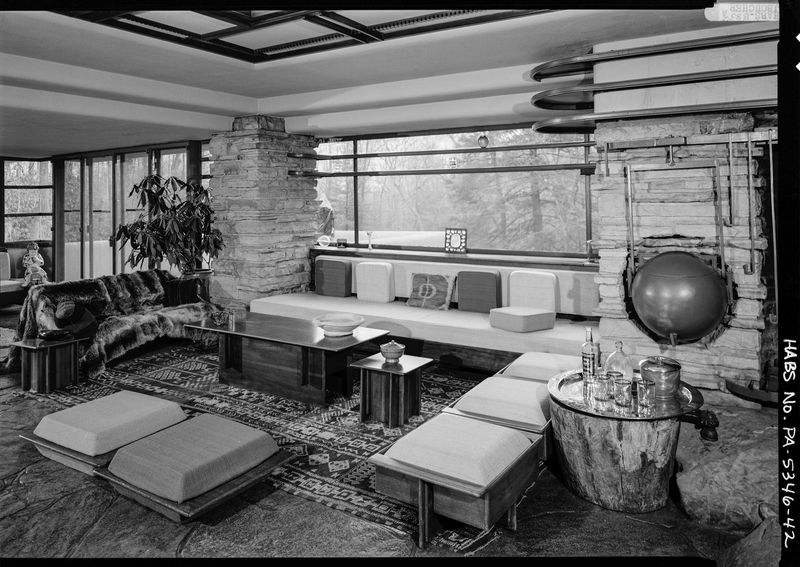
Would you build your living room over a waterfall? This rare 1937 photograph shows Fallingwater’s main room just after completion, exactly as Frank Lloyd Wright intended it to be seen.
Natural boulders jut through the floor, creating an indoor-outdoor flow decades ahead of its time. The Kaufmann family’s original furnishings remain perfectly preserved in this image, from the famous Cherokee red upholstery to built-in reading nooks.
You can almost hear the waterfall below through the massive windows that frame the forest like living paintings.
8. The Frick Collection’s West Gallery

Before it became one of New York’s finest museums, the Frick mansion was Henry Clay Frick’s private palace. This 1927 photograph shows the West Gallery shortly after Frick’s death, when his daughter opened the home to the public.
Rembrandt’s self-portrait hangs casually beside a Vermeer, just as Frick arranged them for his personal enjoyment. The steel magnate’s favorite armchair remains positioned perfectly for viewing his treasures.
Though now a museum, this image captures the space as it functioned as a lived-in home where one of America’s most controversial industrialists surrounded himself with beauty after a lifetime of ruthless business dealings.
9. Henry Ford’s Modern Marvel
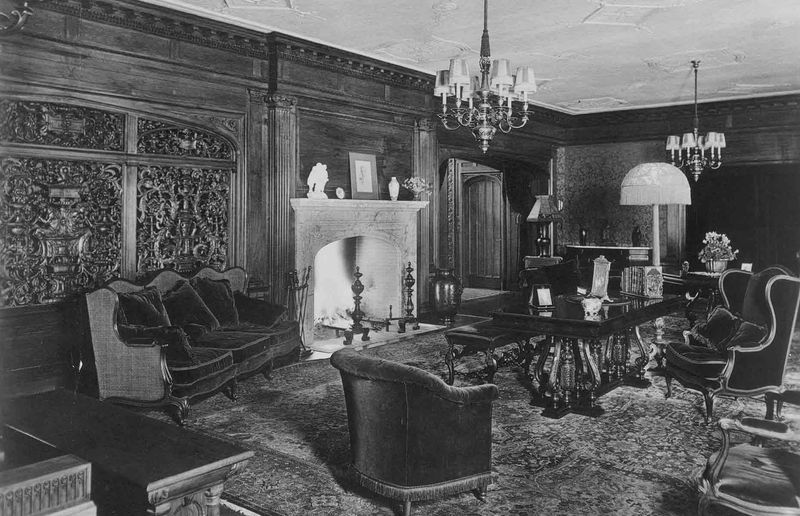
While most mansion photos showcase formal rooms, this intimate 1915 image reveals where the Ford family actually lived.
The glass-enclosed sunroom at Fair Lane estate captured Henry and Clara Ford relaxing with friends on wicker furniture – a stark contrast to the mansion’s imposing stone exterior.
Plants brought the outdoors inside decades before it became fashionable. The auto magnate, famously practical despite his wealth, designed this sunny space himself.
10. Lyndhurst’s Picture Gallery
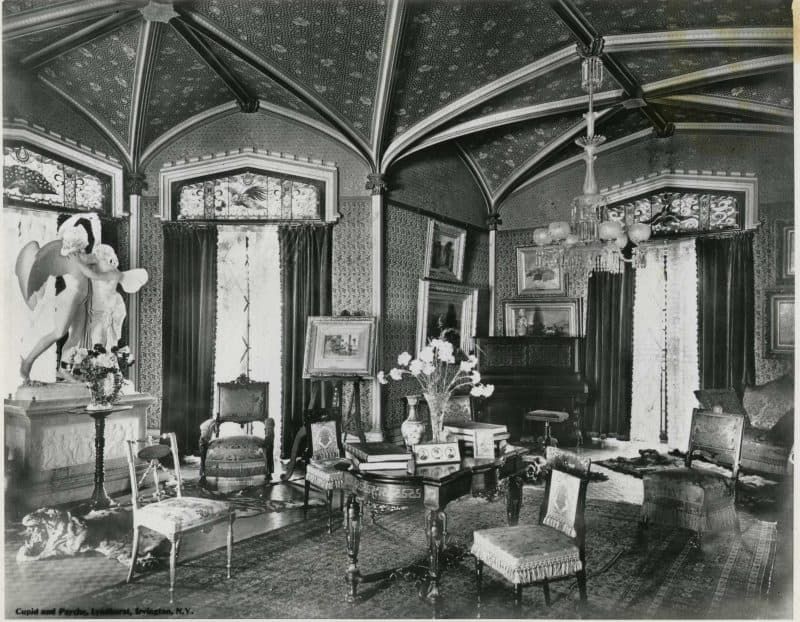
This 1880 photograph shows Lyndhurst’s purpose-built picture gallery – possibly America’s first home designed specifically to showcase art.
Skylights flood the space with natural light, illuminating paintings hung salon-style from floor to cathedral ceiling. Gould, often portrayed as a heartless robber baron, appears surprisingly gentle in this rare image as he shows his daughter Helen a new acquisition.
The photograph captures something unexpected – not just opulence, but genuine passion for art in a man history remembers primarily for financial ruthlessness.
11. Edith Wharton’s Writing Room
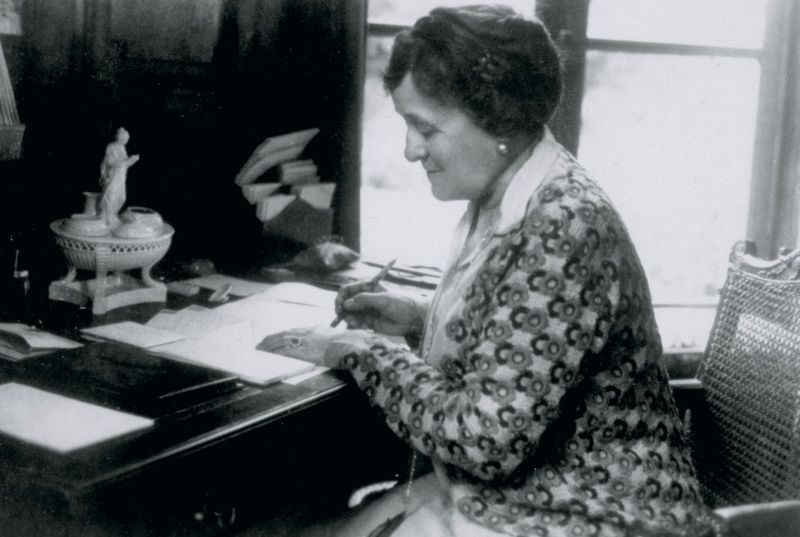
This 1905 photograph shows Edith Wharton’s private writing room, where she penned “The House of Mirth” while overlooking her beloved gardens.
Unlike the formal opulence of other mansion interiors, this space feels remarkably personal and functional. Her writing desk faces away from the window – Wharton claimed the view distracted her creative process.
Manuscript pages visible on her desk in this image would later become some of literature’s most scathing critiques of the very society that built these grand homes.
12. Vizcaya’s Enclosed Loggia
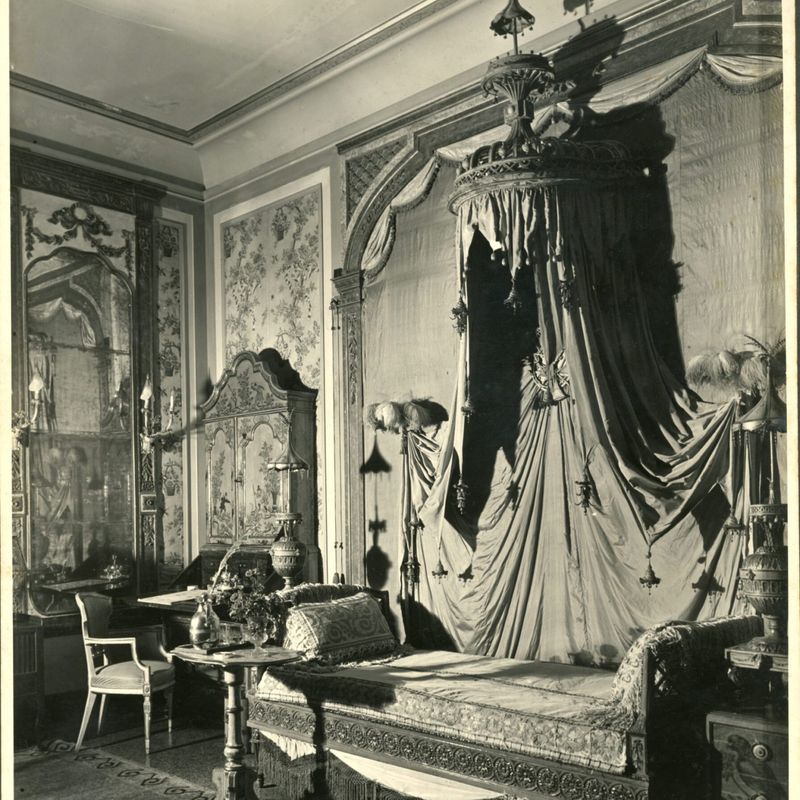
Florida sunshine meets Italian grandeur in this 1918 photograph of Vizcaya’s enclosed loggia. The photographer captured 400-year-old Italian marble columns.
Those magnificent arched windows once opened directly onto the water before modern development changed the landscape.
Look closely at the ceiling – what appears to be ancient beams are actually clever fakes created by Deering’s artisans, who artificially aged new wood to create instant antiquity.
13. The Winchester Mystery House’s Séance Room
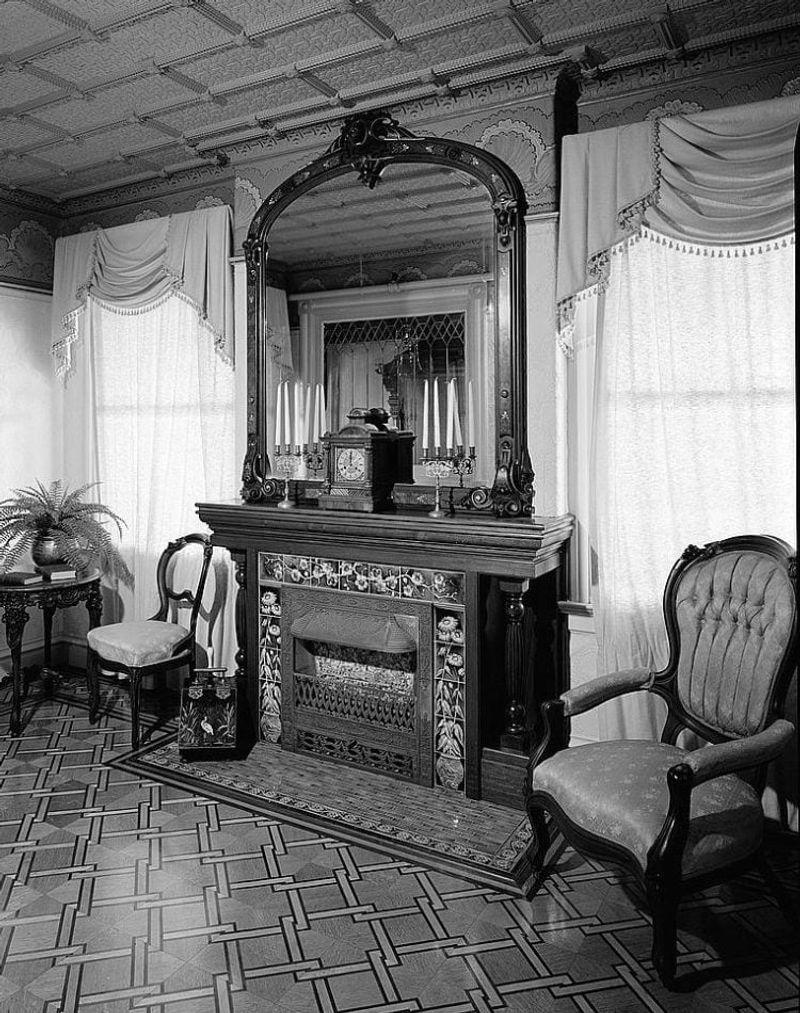
The widow of the Winchester rifle fortune believed spirits guided her endless home construction to atone for lives taken by her husband’s weapons.
This small, room contains thirteen coat hooks, a door that opens into solid wall, and the chair where Sarah allegedly communicated with ghosts nightly. The photographer captured this normally restricted space during rare daylight hours.
Construction sounds heard in this room never stopped during Sarah’s lifetime – the mansion grew to 160 rooms before her death finally halted building in 1922.
14. Oheka Castle’s Grand Library
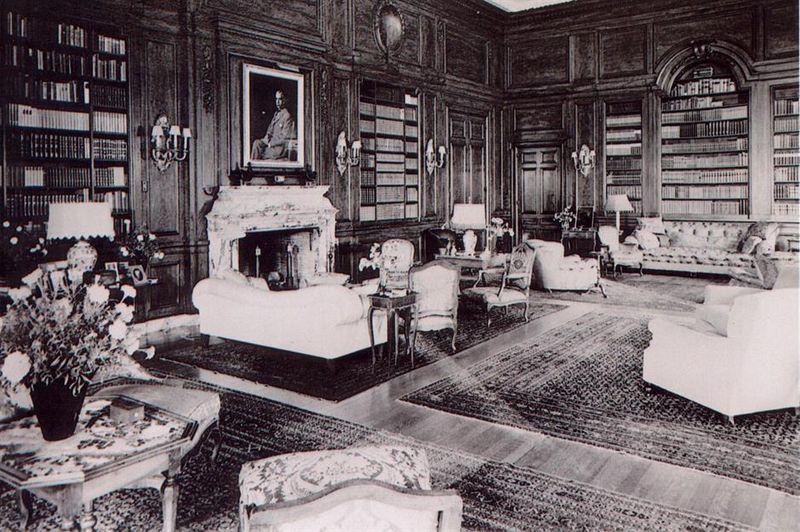
The space is lined with dark wood paneling and towering bookshelves filled with volumes, giving it the feel of a grand private library or drawing room.
A marble fireplace topped with a regal portrait anchors the space, while ornate armchairs, plush sofas, and antique tables fill the room.
Persian-style rugs cover the hardwood floor, and the abundance of flowers, lamps, and sconces add warmth and sophistication to this opulent setting.
15. Gamble House’s Living Room
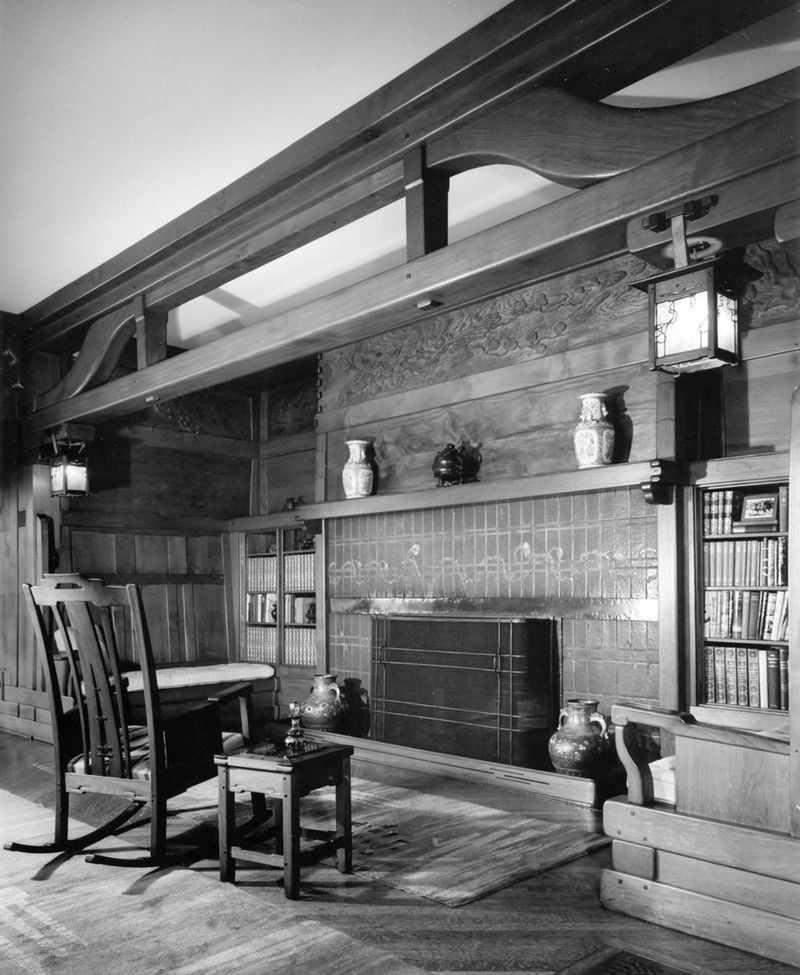
This 1909 photograph captures the revolutionary simplicity of the Gamble House living room, where Procter & Gamble heir David Gamble embraced the Arts and Crafts movement.
Unlike gilded Newport ballrooms, this space celebrates natural materials. Custom-designed furniture by Greene & Greene remains exactly as positioned in this image, making it a valuable record of original intent.
Though less flashy than Vanderbilt palaces, this influential home would inspire American residential architecture for decades to come.

